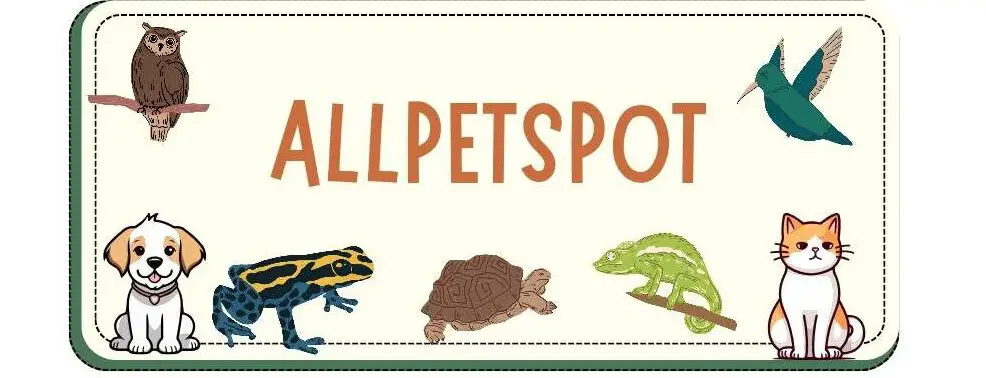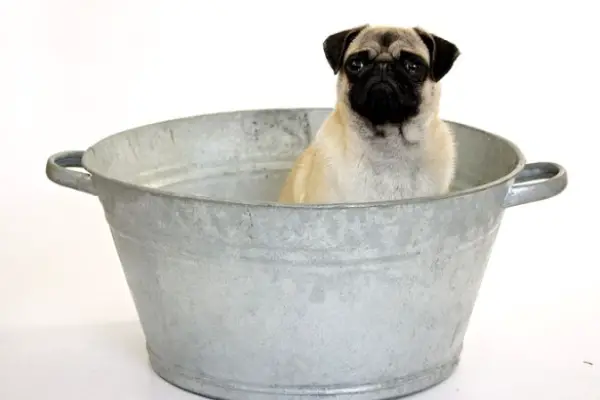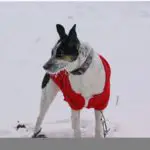Do Pugs shed a lot have divided opinion, but I am here to tell you that Pugs do shed, and their shedding can be controlled, but not prevented!
In this post, we will outline and discuss some common reasons why Pugs shed a lot and ways to control excessive shedding in Pugs.
You can not prevent Pugs from shedding but you can control the level your Pug shed, every dog that has hairs sheds, what matters is the level of shedding.
Before we continue, let me quickly answer your question do Pugs Shed a lot!
Do Pugs Shed A Lot
Yes, Pugs shed all year round losing their undercoat to avoid overheating, especially in the summer. However, Pugs have short, thin, silky hair that is extremely easy to clean and maintain, and they just need weekly brushing to avoid excessive shedding.
The amount of hair your Pug loses is determined by a number of variables. This will depend on the color of their coat because certain coat colors shed more than others and the season as well.
External variables like feeding, temperature, and pest attacks might also affect how much hair your dog sheds on a daily basis.
In the post below, we go through each of these issues as well as the best strategy to deal with your new Pug’s shedding.
Note: Pugs shed all year, but more so in the spring and summer as their somewhat thicker winter coats are shed.
Reasons why Pugs shed so much
The following are some of the most common reasons why Pugs shed more than usual:
1. Allergies
Allergies to food or some things in the environment might irritate a Pug’s skin, causing it to shed. As a result, your Pug may scratch, lick, or bite himself, leading to substantial hair loss.
Allergies in dogs can be triggered by food, dust, medication, and insect bites. Pug s’ hair comes out as a result of an allergic response on their skin when they come into touch with anything they are sensitive to.
This type of shedding isn’t common; you’ll only notice it every now and then. If you notice any allergy triggers, keep them out of reach of your Pugs.
Make an appointment with your veterinarian if you’re concerned about your dog’s excessive shedding due to allergies.
2. Hormonal changes
Hypothyroidism is a hormonal disease that frequently affects Pugs and can result in considerable hair loss.
It affects Pugs’ thyroid glands, resulting in a thyroxine deficit, a hormone that controls metabolism.
Hair loss, a dull and thin coat, discolored skin areas, weariness, a lack of willingness to exercise, and weight gain are all symptoms of this illness.
If your female pug hasn’t been spayed, the amount of fur she sheds at any given moment may be affected by her heat cycles.
Towards the conclusion of those cycles, you may notice her shedding more hair. These types of hair loss are all referred to as hair loss due to hormonal changes.
3. Dietary imbalance
If Pugs consume a poor diet, they may lose a lot of hair. Food insecurity or a bad diet impacts Pugs in the same way that it affects humans.
In Pugs, a nutritional imbalance can lead to substantial visible hair loss. As a result, watch what you feed your dog.
If you observe any unusually heavy shedding after changing your puppy’s diet, whether it’s winter or spring, schedule an appointment with your veterinarian.
The idea that we are what we eat does not apply to Pugs. Pugs will be healthier if they eat a well-balanced diet and not just every human food.
A very well diet supplies the minerals and vitamins required to maintain healthy skin, strong hair follicles, and minimal discharges.
Omega-3 fatty acids are proven to help Pugs grow healthy hair, so including them in their diet is always a good idea.
In the life of a Pug, a wet diet is essential since dry skin can lead to unwelcome hair loss.
4. Age
Pug puppies are known to go through a puppy period where they lose their puppies between the ages of four and seven months.
However, because older Pugs are larger and have a higher surface area of hair, you might argue that they shed more hair.
Pugs over the age of eight years are more likely to have health problems, which can lead to hair loss.
Remember that Pug pups shed a lot more once they’ve outgrown their puppy coat, which happens around four months. They will then shed abundantly until they reach maturity.
5. Seasonality
Because the pace or degree of shedding is controlled by the season, it is one of the primary reasons of Pug shedding.
There will be a lot more Pug hair droppings in the spring than in the winter.
As a result, it’s logical to suppose that the season has an effect on Pug’s shedding rate.
Pugs lose their coat in the spring to avoid the heat, then re-grow it in the summer to make thicker winter coats.
Pugs shed less in mild weather, so keep your Pug’s temperature down in the spring.
You’ll be amazed at how much your Pugs shed if you don’t look after them throughout the summer.
6. Medication side effects
If you give your Pug medications and it immediately begins shedding, the medication’s adverse effects might be contributing to the excessive shedding.
Certain medications, on the other hand, may cause your pug to scratch excessively and shed as a consequence of irritation or scaling.
Your Pug may lick herself due to sickness, resulting in baldness. If your dog is shedding excessively, you should have him checked out to rule out any health issues.
Consult your veterinarian to discover if any of your Pug’s medications are contributing to her excessive shedding.
7. Stress or Anxiety
Pugs shed a lot because dogs lose their hair when they are stressed, and Pugs are no different.
When the Pug is overworked, worried, or nervous, hormonal swings occur regularly, leading to excessive or low secretions.
Your dog will start flinging hair more frequently when things get highly excited for the same reason.
You might believe your Pug is developing more hair when you return home from a trip and discover hairs all over the place, but this is only a sign of stress.
As a result, anxiety, grief, and other negative emotions are frequently connected with stress-related dog hair loss.
Pugs are a little breed that was bred primarily to be human companions, thus they can’t withstand a lot of stress.
8. Body temperature
Pugs are small breeds of dogs who are prone to heat exhaustion and do shed excessively as their body temperature rises.
Pugs shed a lot, especially if they live in a hot climate. Excessive shedding happens when a Pug’s body temperature rises more than the usual.
As a result, don’t overwork your Pugs; a daily stroll of 10 minutes should be enough. You’ll find hairs all over your house if you overwork them.
Keep an eye on their temperature and stay away from anything that might cause it to increase. Like playing with your Pug in hot time of the day.
A rise in body temperature can also create breathing difficulties due to the size and shape of the nose.
9. Pest bites
Pugs shed a lot because parasites like fleas, mites, and lice can infect them.
A single bite from one of these pests can result in a variety of problems, including shedding.
Even though the amount of shedding is modest, Pugs aren’t fond of bug bites, and this bite might cause shedding.
If your Pug gets parasite-infected, the shedding will continue until the parasite is eradicated.
As a result, the dog will get itchy and scratch itself, possibly leading to bald spots.
Flea bites can result in a number of health issues, including excessive or infrequent shedding.
Keep your Pug away from fleas since flea bites can trigger serious allergic responses.
10. Infections
One of the most common reasons of hair loss in Pugs is bacteria pathogens, fungal infections, and infestation.
These health issues frequently create a great deal of discomfort and contribute to hormonal imbalances, which in turn cause hair loss.
Bacterial illnesses like salmonella can be contracted by eating raw foods like raw chicken.
A fungal infection can also cause the condition, which can occur if your Pug comes into contact with mold or other forms of fungi.
Mold may develop on even your snacks and dry food, so always store them safely after use.
Keep in mind that Pugs are extremely nosy and will smell out whatever they can discover in the corners of your home.
As a result, make sure your house and the areas your Pug frequents are free of mold and dampness.
Excessive shedding might occur after a stroll when Pug inhales spores on the ground.
11. Changes in diet
This type of shedding is prevalent in Pugs whose owners want to try new foods instead of adhering to tried-and-true recipes.
Hair loss and shedding may result from a change in your Pug’s diet. This is more likely to occur if your Pug’s diet is deficient in nutrients.
If your Pug’s coat changes after you change their diet, go back to the prior food.
When you switch to a new dog diet that is lacking in particular nutrients, your Pug will shed more to compensate for the lack of or excess nutrients.
Always with your veterinarian before changing your dog’s food.
Read more about the 10 Common Pug Sick Symptoms.
How to control shedding in Pugs
The following are some of the most prevalent methods for controlling or reducing shedding in Pugs:
1. Regular brushing
The most effective technique to deal with Pug hair loss is to use a brush. It not only promotes blood flow to the skin’s surface, but it also helps to disperse natural fats.
It also means that loose bristles on the brush won’t end up on the floor or on the sofa.
Because Pugs adore treats, always provide them before and after brushing. It is advised, however, that you brush your Pug for at least 8-13 minutes on average.
You may be required to brush your Pugs at least twice every 6 days, depending on your schedule, but if you’re busy, you can brush once a week.
When considering why Pugs shed so much, weekly brushing should be considered as a preventative approach.
2. Feed high-quality dog food
Keep an eye on your Pug’s food consumption. A well-balanced diet supports good skin and reduces shedding in all dogs.
The food that a Pug eats should be healthy and well-balanced. The quality of your Pug’s coat is influenced by how well you feed it.
To prevent even the tiniest hair shedding on the inside to a minimal, feed your Pug a well-balanced diet.
Your Pug’s hair and skin will be as smooth and healthy as possible if she eats dog food high in Omega-3 fatty acids, oils, and minerals.
Before making any modifications to your Pug’s diet, speak with your veterinarian.
3. Prevent parasites
Fleas, ticks, and other parasites can irritate your Pugs and degrade their coat quality.
If not treated properly, flea bites in Pugs can result in significant hair loss as well as itchy, inflamed skin.
To discuss tick and flea prevention, make an appointment with your veterinarian.
4. Avoid allergies
One of the most important things you can do to keep your Pugs from shedding excessively is to eliminate allergies.
Pollen, mold spores, dust mites, and dead skin cells, to mention a few allergens, can cause allergies in pugs.
Keep an eye out for rashes or hair loss on your dog’s skin or hair that might indicate a food allergy.
The following are some of the most typical signs that your Pug is allergic to certain foods or materials:
- Your Pug is always gnawing at its skin.
- When your Pug sneezes a lot, it’s a sign.
- Your Pug have a runny nose.
- Frequently licking the paw or skin.
- This is a common occurrence of diarrhea.
- The skin on the face swells up.
- Your Pug throws up a lot.
- Tears are welling up your Pugs eyes.
- Ears that are itching your Pug.
5. Bathing your Pug
Regular washes and the use of deshedding dog shampoo are also beneficial to pugs when it comes to controlling shedding.
Bathe your Pug once a month to ensure that their double coat is well cleaned, this will help reduce excessive shedding in your Pug.
And don’t worry if you’re dislodging a lot of stray hair at bath time. Pugs shed a lot during bath time, but it’s nothing to be concerned about.
Just make sure they’re completely dry with a towel or a blow dryer before allowing them back into the home, furthermore, be cautious around their tight face creases.
6. Use supplements
You may complement your pug’s diet with vitamins to guarantee a healthy coat, in addition to providing nutritious dog food and treats.
Supplements containing linoleic acid, flaxseed oil, and omega 3 fish oils should be sorted.
Omega 3 fish oils are particularly beneficial for keeping your pug’s coat and skin healthy, as well as avoiding hair breaking, which can cause them to shed more than usual.
7. Keep your Pug hydrated regularly
Make sure your Pug has access to clean drinking water at all times to avoid dry skin and to help lower your Pug’s body temperature.
This is important because dogs that don’t drink enough water have dry skin and hair, which contributes to excessive shedding.
If your dog’s water dish is maintained clean and full, the risk of harmful bacteria being consumed is decreased.
Keep an eye on your Pug’s water bowls to ensure that they are only drinking clean water.
Not only will dehydration create health issues, but it can also induce shedding in small breeds of dogs like Pugs.
As a result, make sure your Pug has access to fresh water at all times.
8. Avoid stale food and table scraps
Inadequate Pug diets, such as stale dog food or table leftovers, can cause digestive problems in any Pug, eventually leading to undesired hair loss.
Did you know that cleaning up trash from the ground might expose your Pug to hazardous microorganisms?
Allowing your Pug to pick up food from the ground is not acceptable.
Keep your Pug’s food in a clean container at all times. Avoid dropping food from the table during dining.
9. Keep away stress
Manage your Pug’s stress level to help reduce shedding. Stress might cause your dog to shed more than usual.
Many changes in your dog’s surroundings, such as relocation, the death of a fellow pet, or the birth of a new pet, might cause further worry.
To help your dog manage stress and shed, give her lots of exercise, love, affection, and attention.
Read more about Pug Separation Anxiety: 8 Signs & Solutions
I hope your question Do Pugs Shed A Lot was addressed!










